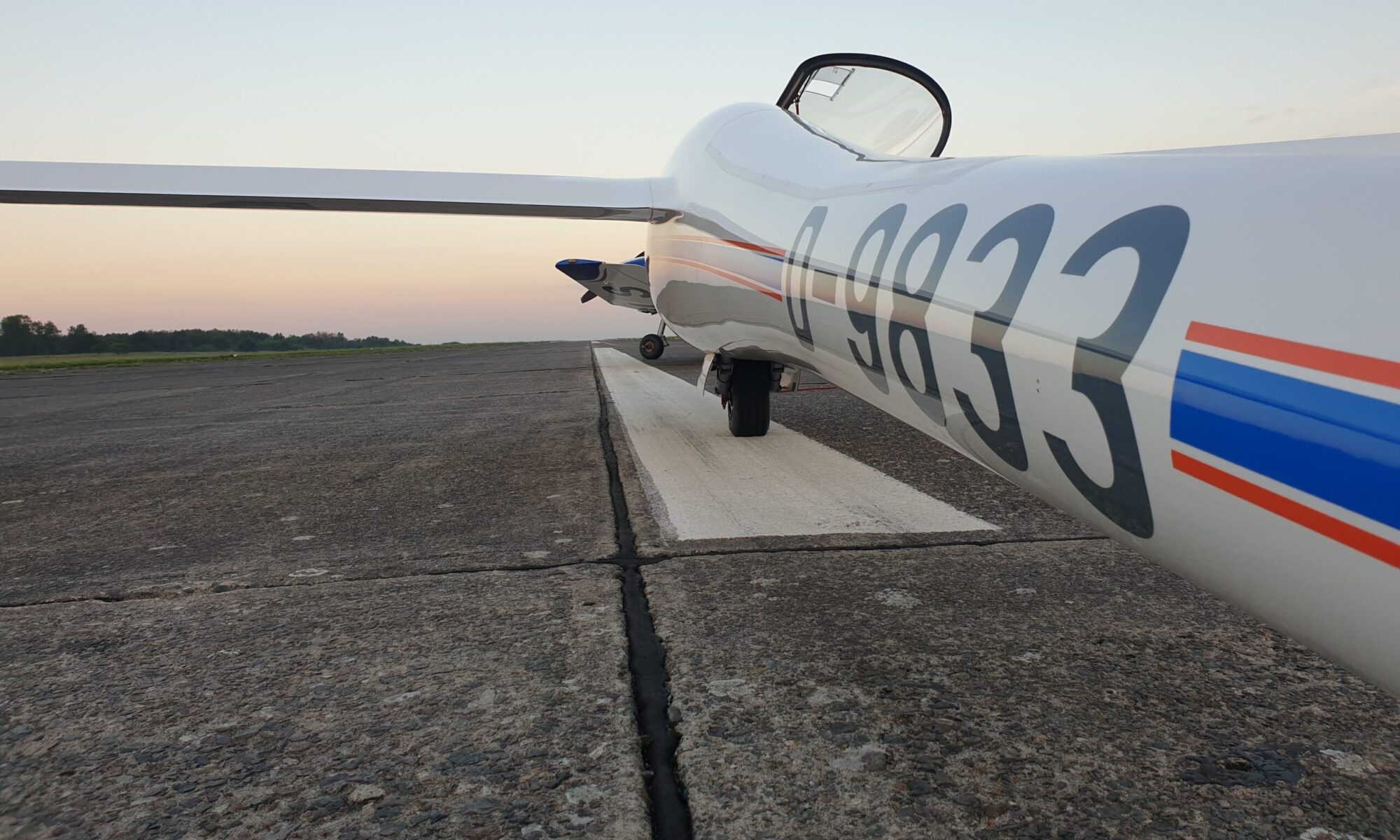We all know that Angle of Attack (AOA) is the measure of our approach to stalling. However, in general aviation we don’t measure or display it. I’ve always thought that it’s a shame we don’t; in military aviation the use of AOA is ubiquitous, reducing pilot workload. Most military aircraft even show the AOA in their Heads-Up Display (HUD), both as a value and in a projected velocity vector. In my experience flying military simulators, this makes landing quite simple.
Since we fly large portions of our flight at a high AOA, I thought it would be valuable to have the pilot know their AOA. We don’t have fancy HUDs, so we would need to convey the AOA information in another way to the pilot. Both DG and the Akafliegs have used “Seitenfaden” – strings at the side of the canopy – with good results.
These side-strings work well, but they have to be looked at and interpreted by the pilot. Interpretation of visuals happens in a relatively recent part of the human brain, and requires more effort than processing sound or tactile information. I’ve experienced this when I navigated through a city using just a tactile car seat myself. So I started looking for ways to convey the AOA – a pretty vital piece of information – by sound or touch. Then I stumbled upon an existing audio AOA indication, which was present in the F4 Phantom jet.
Idaflieg
After last year’s Idaflieg Sommertreffen, I decided that for 2024 I wanted to test a more intuitive version of an AOA system. Idaflieg’s Zacher experiments, where students take their first steps as test pilots, provide the ideal environment to test such an experimental system. The goal is to provide the pilots with a small electronic device that can easily be plugged into the existing instrumentation, does not require too much workload to operate and will always give an audio indication of your AOA.
Design
It is probably easiest to approximate the AOA by the Lift force, as we can calculate it from the Indicated Airspeed (IAS) and the Load factor (G’s). After indicating what the system should consider as the maximum AOA, it can estimate the AOA in most situations.
Simulation with Condor Soaring
The first step was to write simply try something and simulate it. So I did: I wrote a Linux program which receives Condor Soaring’s UDP information 10 times per second and estimates the AOA. It them generates 100ms worth of sound to indicate the AOA to the pilot.
When I tested this with Condor Soaring, the result was very pleasing. It became pretty effortless to fly steep turns with a glider, right on the edge of stalling. During loops you also get valuable feedback for flying your figures well. During landing it allows you to direct your focus to the outside world and not scan your airspeed indicator for things like wind-shear.
Turn your sound on. The “clicks” indicate the AOA: the closer to MaxAOA, the faster the clicks.
Overall, flying in the simulator felt more relaxing. Funnily enough, this was also the major problem that instructors mentioned when I asked them if they would consider such a system for their students. With increased automation and assistance comes an increased risk of automation complacency.
Overall I’m pleased with the results of the simulation. The next step will be creating a small device that the pilots can actually bring during the next Idaflieg Sommertreffen. This requires me to learn something new: designing Printed Circuit Board Assemblies (PCBAs). As I’m writing this, the first iteration of a PCBA is on its way to me…

One Reply to “Towards an Audio Angle of Attack indicator – Part 1: Inspiration and simulation.”
Comments are closed.